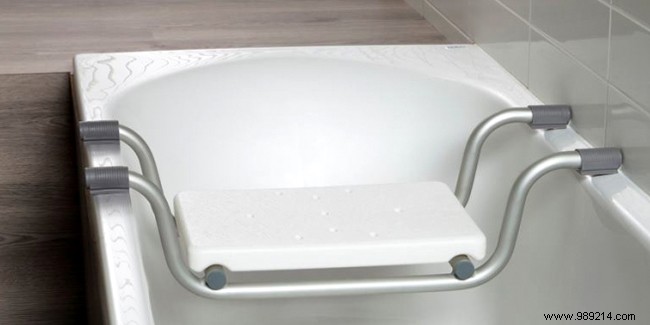These days, new building standards provide for layouts designed for people with reduced mobility, but these questions essentially come down to access to spaces and not to the adaptability of equipment. It is nevertheless a step forward in this area which is progressing only timidly.
When you already have your bathroom and want to adapt it for the use of a person with reduced mobility, there are fortunately solutions in terms of equipment and accessories that can be easily put in place and which respect a certain aesthetic (see here for the costs). A brief overview of methods for adapting your bathroom to people with reduced mobility.

Source:Bathroom PMR PlaneteBain
Nearly 300,000 people are considered to be people with reduced mobility, or PMR, in France. Suffering from reduced mobility is not only limited to the fact of moving around in a wheelchair, it also concerns the elderly who struggle to perform certain simple daily gestures due to their aging. Nowadays, staying at home as long as possible is strongly encouraged and made possible by the proliferation of home helpers. But these are not the only people requiring an adapted bathroom, because a person in a situation of obesity also encounters difficulties in performing certain movements, like a pregnant woman. In addition, we can all be injured at some point in our lives and be restricted in our freedom of movement, temporarily or permanently. Thus, a bathroom adapted for people with reduced mobility can be an asset for the whole population.
If the new construction standards take into account the movement of people in wheelchairs within the spaces, there are other forms of equipment and accessories that make the bathroom fully accessible to all.
Several associations support these changes and arrangements, taking into account each situation and all forms of disability. This is particularly the case for Handibat-certified installers and the Soliha network, which specialize in this type of development. State aid is also possible, in particular from the National Agency for the Improvement of Housing (ANAH).
The shower is the most present equipment in homes. The walk-in shower is the most suitable model for people with reduced mobility. There are some models that are perfect on the same level and others with a slight edge that must not exceed 2 cm in height and which must be pointed out to avoid hitting it.
To prevent falls, the shower floor must be non-slip and standing and lifting bars must be provided on the walls. A seat must be attached to one of the walls; it can be with or without backrest and armrests.
The faucet device must be easily adjustable, i.e. thermostatic and installed in such a way as to facilitate its use by a person with reduced mobility and by a caregiver.
The bathtub can be secured with a non-slip coating, seat and grab bars. Here too, the taps must be secure, easy to adjust and accessible for use by the person with reduced mobility and by a caregiver.
The walk-in bathtub is an excellent solution, as it allows access to almost everyone, depending on the height of the step.
The washbasin must be placed at a height allowing seated use and the possibility of sliding one's legs under it. Generally, the siphon is offset to avoid any discomfort and the storage is installed on the side.
The toilets must be fixed at the right height and surrounded by grab and lift bars. Some models are height adjustable and even self-cleaning to facilitate cleaning and guarantee better hygiene.
Equipment isn't the only thing to consider. Making your bathroom accessible to people with reduced mobility requires a completely secure environment. To do this, the installation of a non-slip floor covering is essential. For free movement without risk of falling, it is recommended to avoid any carpet or object presenting a source of danger.
The lighting of the room must be consistent and sufficient to allow good visibility. Ideally, it is recommended to install a ceiling light and lighting at the sink.